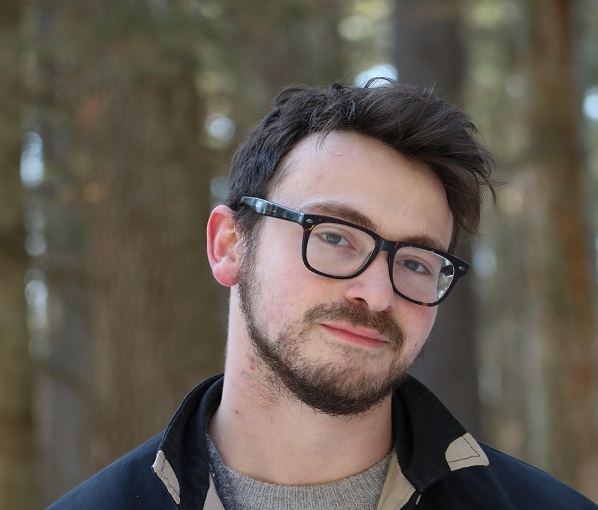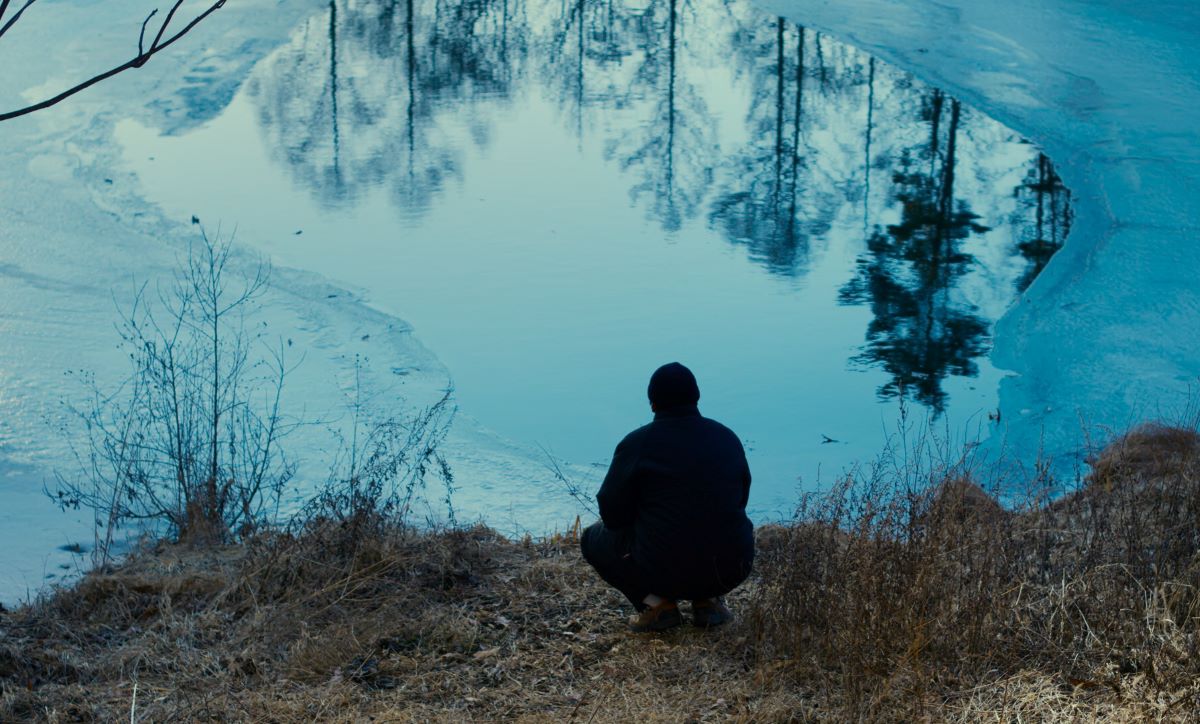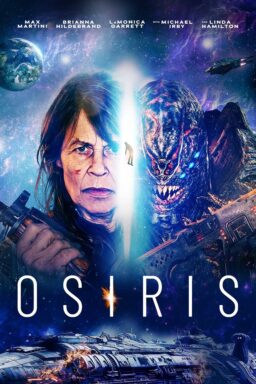With “Evil Does Not Exist,” his enigmatic follow-up to the Oscar-winning drama “Drive My Car,” Ryûsuke Hamaguchi stages an ominous, slow-burning thriller deep in the Japanese wilderness.
There, in the small village of Mizubiki, not far from Tokyo, the residents live in relative harmony with nature, chopping wood, gathering wild wasabi, and drawing pristine water from a nearby spring that nourishes both the local wildlife and their tight-knit community. Deer roam freely across icy mountains and emerald-green lakes, but human civilization’s presence in this serene landscape is at once tense and tenuous. The everyday dangers posed by flooding and deer hunting, however, are less overtly alarming than the arrival of Playmode, a city talent agency intent on building a glamping site in the area, despite the environmental collapse this urban gentrification would precipitate.
After two Playmode representatives (Ryuji Kosaka and Ayaka Shibutani) arrive to seek the support of locals in facilitating their development, widower Takumi (Hitoshi Omika, previously a member of Hamaguchi’s production team on “Wheel of Fortune and Fantasy”) is conflicted as to his potential involvement in the project, especially once a meeting to brief the community makes clear the company’s failure to consider how “what you do upstream will affect those living downstream,” as one attendee pointedly distills.
One of those living downstream, Takumi knows, is his eight-year-old daughter, Hana (Ryo Nishikawa), who often walks home alone from school through the woods, a tendency made troubling by the sensation that this village’s fragile coexistence with nature is under attack. “Evil Does Not Exist” opens with the uneasy, mournful strings of Eiko Ishibashi’s score, which resonate first in darkness then throughout an extended tracking shot, pointed upward into a canopy of branches and leaves, before a little girl is suddenly seen in the middle of the forest: Hana, her eyes trained on the treetops.
The beguiling and intense relationship between sound and image, from this sequence on, is among the many juxtapositions central to Hamaguchi’s vision for “Evil Does Not Exist.” It was also the impetus for the film (in U.S. theaters May 3, from Sideshow and Janus Films); after Hamaguchi was sent new pieces of music by Ishibashi, who also scored “Drive My Car,” he first envisioned the project as a 30-minute, dialogue-free visual accompaniment to her work, only to expand it into a feature after spending time in the rural community where Ishibashi lives. (The two also collaborated on “GIFT,” a silent version of the story, to be presented only with a live accompaniment of Ishibasi’s score.)
“Evil Does Not Exist” had its world premiere at last year’s Venice Film Festival, where it competed for the Golden Lion and won the Grand Jury Prize; during its tour of the international festival circuit, the film also traveled to Toronto, London, and New York, where Hamaguchi visited the Criterion offices and sat with his translator, Monika Uchiyama, for an interview with RogerEbert.com.
Below, our wide-ranging discussion about the destruction of ambiguity in modern cinema, the influence of legendary Japanese filmmaker Kiyoshi Kurosawa, the ideological instability present in discussions of environmental collapse, images of death or absence, and the moral imperative to reveal truth.
This interview, facilitated by translator Monika Uchiyama, has been edited and condensed.
“Drive My Car” received universal critical acclaim, winning three prizes at Cannes and a best-picture nomination at the Academy Awards, the first ever for a Japanese film. I’ve read that “Evil Does Not Exist” started as a collaboration with Eiko Ishibashi, who scored “Drive My Car,” but how did you find your way to this film and decide to make it next?
Initially, the project was because of an invitation from Ishibashi, to make images to accompany her live performances. I probably received this offer around the end of the year, in 2021. And the timing of that was prior to the Academy Awards for “Drive My Car,” but it was certainly after I had finished work on the film and the film had already had a theatrical release. And so, when I received the offer, I genuinely thought, “This sounds really fun.” The process of making “Drive My Car” was just very satisfying, and I felt a kind of closure with that project. To take on an offer that was very different, especially one that would distance me from dialogue-heavy narrative, just sounded like it would lead me to a different place, and I was very excited about that. Also, promoting the film and experiencing the Oscars, all of that was very tiring. So, this was a fresh direction that I was able to pursue after a period of relaxation.
Ishibashi’s music for “Drive My Car” has such emotional depth, longing, and mystery, and her score for “Evil Does Not Exist” even more directly leads us through the film in many ways. I found its mood haunting and ambiguous. What was your perception of her work initially? What elements did you find yourself responding to in creating these images of nature, society, and hidden menace?
I would say the relationship between the music and the image was built off a back-and-forth relationship between myself and Ishibashi. The project was developed over a very long period. Sometimes, I would send images or settings that I felt matched her music, then she would send me demos, and then I would respond to those with images that felt like they matched. One thing we landed on was thinking about nature and the small movements of nature. We had a feeling that idea really lined up with the quality of her music.
Once the film was finished, that is when she provided the main theme of the film that we hear throughout, as a response to the finalized narrative. That result of going back and forth, trading work, and being inspired by one another created a very great match between music and image. Myself and Ishibashi, I’d say we have our own respective visions, and that’s also preserved in the film. The image and the music aren’t dependent. They’re able to match while also standing independently of one another. In that sense, I think we were able to reach an ideal finished product, as far as that relationship goes.

Another frequent collaborator of yours is Kiyoshi Kurosawa, whose films are among the most profoundly unsettling I’ve seen, especially “Cure” and “Charisma.” To ask about any intentional evocation or more unconscious relationship between his work and “Evil Does Not Exist,” I felt strongly you achieve a sense of dread with this film that’s ambiguous and existential in a related manner.
Kurosawa-san was my teacher in graduate school. He’s, of course, as a filmmaker, someone whom I respect. I love his work, but I would say I was never trying to copy Kurosawa-san, and I try not to chase after his work either. I think that we have two very different approaches. As a person who writes from dialogue myself, I believe this makes certain our works diverge. However, I would say this film is the first time I was actually keeping Kurosawa-san in the back of my mind: yes, in the sense of horror, but more in the sense of the ambiguity of his films. In the ’90s, when he was most prolific, a lot of his films had very unclear endings or were left very unresolved, and that unresolved nature is what made those films leave such a deep mark within the viewer. That is something I was really thinking about in making this film and something I was striving towards.

Ambiguity is present on many levels here—social, environmental, moral, existential—and the film’s title is of course highly ambiguous. “Evil Does Not Exist” explores humanity’s trespass upon nature, and civilization’s intrusions into wilderness, through its story of a corporate agenda and this community’s response to it. Its ambiguity was compelling to me, given the level of discourse in today’s society around basic principles of truth and reality as they pertain to environmental concerns and climate denial. In your film, there’s a kind of ideological instability present as well, around nature and our perception of it.
I’m not confident I’ll be able to answer this very well. But the themes in this film, particularly glamping, are very true to life. In fact, the idea of this irresponsible plan presented to this village for a glamping site all came from my research and came from an actual community meeting that happened in the region that I was trying to film in. It’s the type of project where long-term effects are not considered at all, and all the people are considering is short-term profit. In the meeting this scene is based on, that plan is critiqued by the people and ultimately shut down. But these types of plans are everywhere, and not all of them get shut down. A lot of them actually end up passing through.
This type of situation, where developers are trying to take advantage of regions, not considering the long-term effects, and only thinking about the short-term profits, is mirrored in the film industry as well. In the past 20 years, in film, I see that ambiguity is gradually being destroyed. It’s hard to preserve when what’s valued is very momentary or quick responses to art. People are asked to react very quickly, form opinions, or have things to say very fast. In our world, where we live so closely and intertwined with social media, it especially creates a situation where these types of quick reactions are held up, and ambiguity continues to be lost. That is a symptom I have seen over the past 20 years. I think that the truth of the world can’t really be found in those types of short-term, short-sighted reactions. Ambiguity is important to preserve, because—like I said about Kurosawa’s films—what is ambiguous is what ends up resonating deeply with audiences. This film, and its ambiguity, is one way that I’m resisting the trends of today.
As opposed to “Drive My Car,” the editing rhythms of which allow for a sense of flowing melodically in and out of scenes, the editing of “Evil Does Not Exist” is often abrupt and violent, compounding the film’s sense of dread. Even in seemingly tranquil scenes of life in the village, you find these precise moments to dislodge sound and image, right from the opening tracking shot through a forest that’s accompanied by Ishibashi’s score.
In the films I’d made up until “Drive My Car,” even before the edit, as I took into consideration where I would place the camera, I was thinking more about transitions and making sure that the story in the film would flow very smoothly. A lot of this was in consideration of longer runtimes and audience attention spans. That smoothness felt important—both in camera position and editing—to retain interest and to make sure that the audience wouldn’t get too tired. I do feel, though, that when I try to make a scene or transition smoother, that each scene or shot becomes less noticeable or less memorable. More abrupt and violent cuts—in the edit and also in how one places the camera—can lead to a more memorable sense of each scene.
I will say that this film is a bit shorter in runtime than a lot of my previous films and also that this film’s relationship to music is quite new. I was constantly considering the audience’s stamina but also meeting the audience in a certain rhythm. I needed to create moments of deep immersion through a certain smoothness, then abruptly change that with more violent edits. Ishibashi-san’s music is quite smooth in how it builds; listening to that music creates a kind of smoothness in of itself. However, the abruptness was something that needed to be there, both to retain attention and to create a certain effect. I’m not sure whether that was successful or not. For myself, it was a really interesting challenge, to make those two styles coexist with one another.

With regard to the way this film’s images linger in the mind, through the design you’re describing, “Evil Does Not Exist” is often troubled by images that express death or absence: bird feathers, the carcass of a fawn, gunshots in the distance, blood dripping from branches, tracks in the snow that trail off in the wilderness…
Just as you said, I really wanted to make sure that the audience was able to notice very small, minute details. To do that, oftentimes it means setting up a shot so that nothing is there, to find shots where there is no presence, where nothing is happening. Then, when there is a change, we become very sensitive to that change. It’s as if that non-presence ensures that those small details are noticed.
This film was shot according to the script; there’s very little improvisation, and everything was essentially determined beforehand. But we stumbled upon the carcass of the fawn; the assistant director found it, actually. And when I saw that image, I knew it was something that the movie could not function without. It was as if everything made sense in that moment. It was about showing the closeness of death. In these rural environments, more so than in cities, death feels very close. It’s in the environment, and it’s easily made visible.
When we last met to discuss “Wheel of Fortune and Fantasy” and “Drive My Car,” our conversation turned to the works of Anton Chekhov and Haruki Murakami, both of which particularly informed the latter film. Beyond Chekhov, “Evil Does Not Exist” even more directly evokes Henrik Ibsen’s “An Enemy of the People,” which shares ideas that recur in your work around the nature of community, the impossibility of truth, and the lack in our world of absolute principles of wisdom or morality. Was that a conscious influence?
The truth is, I hadn’t read “An Enemy of the People” before I made the film. In fact, it was after people watched it and asked me about it that I read the play. And I noticed that it is very similar, although that is a coincidence. I have read other Ibsen plays, and I find them very interesting. I think about his stance on truth and how he investigates it as being very similar to mine. I think of truth as something that is not always convenient—or that never is very convenient.
In the quest to show or reveal truth, often that can mean destroying happiness or even destroying society. They are always on a balance beam: morality and happiness. The moral imperative to reveal truth can sometimes create situations that are very difficult. This tension or relationship between ideas is very hard to depict in contemporary society. But if there is a way for me to make a film that directly addresses these issues, I would love to try, and there will be deep emotion that I’ll be able to tap into if I’m able to successfully do that.
To that end, the scene depicting a town meeting is completely riveting—and I have to imagine it was a demanding one to shoot. It’s a lengthy sequence, and you capture such a diversity of perspective, as well as the fluid dynamics of power present in the conversation, through careful camera placement, meticulous attention to eye-lines, and positioning of characters within the shot.
First of all, thank you for even noticing the framing of the camera and the positioning of this sequence. Of course, I think that the positioning of the camera is very, very important in that scene. There are three different perspectives that needed to be shown: the two people from Playmode who are presenting the plan for the glamping site, the people on Takumi’s side, and the woman that speaks toward the end. The townspeople are opposing Playmode, but there’s a difference between what is said between Takumi and his counterparts and what is said by the woman.
Very directly, I wanted the seating to reflect the differing opinions. In order for that to be reflected also narratively, the positioning of the camera became very important. In comparison to the rest of the film, to our earlier discussion about smoothness versus abruptness, this was a scene where the flow of things was deeply considered, because of the scene being 20 minutes. I wanted to make sure that it held the attention of the viewer and that they would be immersed in the scene.
“Evil Does Not Exist” opens in U.S. theaters May 3, via Sideshow and Janus Films, and expands nationwide in subsequent weeks.












